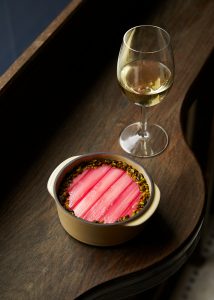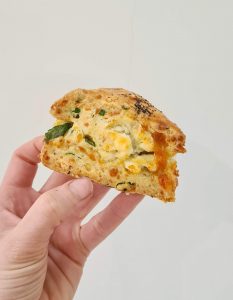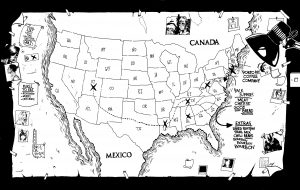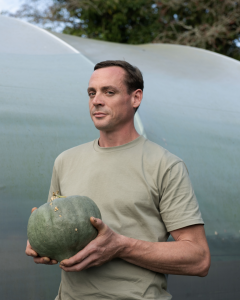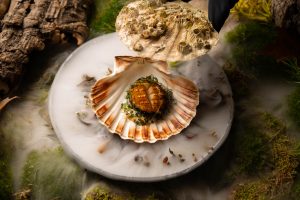- Natalie Hammond talks to New York-based blogger Nicole Villeneuve about how her love of literature and experimental cooking combined in an unexpected way
In A Farewell to Arms, Frederic Henry extols the virtue of a dry martini: “I had never tasted anything so cool and clean. They made me feel civilised.” But while his creator’s drinking habits are legendary in literary circles – Hemmingway allegedly knocked back 16 daiquiris during a particularly liquid lunch and rollicked in Parisian bars with James Joyce (always defending his feeble friend who would cry “Deal with him, Hemingway, deal with him!”) – Nicole Villeneuve, the New York-based author of recipe blog Paper and Salt, offers readers a rare glimpse at Hemingway’s prowess in the kitchen.
As fond of good food as afternoon libations, Hemingway’s memoir, A Moveable Feast, documents the cafés, bars and restaurants he frequented in Paris in the 1920s. But according to Villeneuve, Hemingway’s fascination with food began much earlier in his life. “Even when he was a little kid, he would say, ‘I’m going to pick strawberries so that mum and I can make strawberry shortcakes.’” The image of a young Hemingway whipping up a shortcake batter is certainly at odds with the macho pastimes of his adulthood, which included boxing, bullfighting and hunting. “It was so intriguing that he had this interest in food running throughout his life,” says Villeneuve.
Right: Hemingway’s
bacon wrapped trout

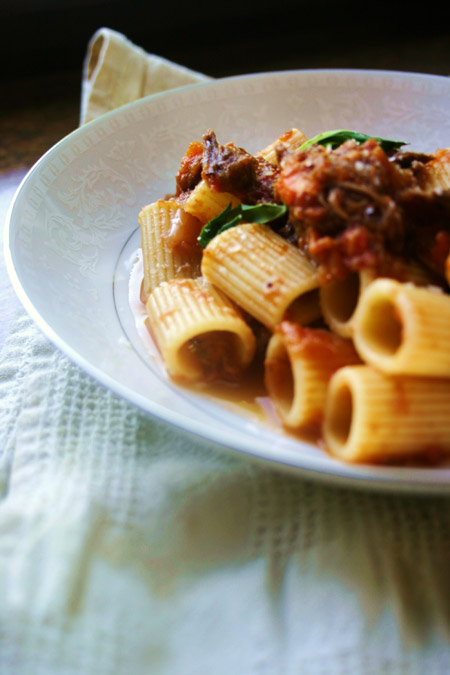 After reading a collection of Hemingway’s letters for a job assignment – Villeneuve is a senior publicist at an independent book publisher – the 25 year-old decided to start Paper and Salt, devising recipes in her tiny apartment on the Upper West Side from the food writers describe in their letters, diaries, essays and fiction. “I think eating is a natural extension of reading because those are the two things that drive so many people. Whenever someone tells me what they’re reading, I always wonder what they’re eating and what restaurants they are going to,” she says. As well as baking sugary treats, Hemingway became a keen fisherman after summer vacations spent in Michigan, inspiring Villeneuve to recreate one of his campfire classics, a whole bacon-wrapped trout with a side of corn cakes.
After reading a collection of Hemingway’s letters for a job assignment – Villeneuve is a senior publicist at an independent book publisher – the 25 year-old decided to start Paper and Salt, devising recipes in her tiny apartment on the Upper West Side from the food writers describe in their letters, diaries, essays and fiction. “I think eating is a natural extension of reading because those are the two things that drive so many people. Whenever someone tells me what they’re reading, I always wonder what they’re eating and what restaurants they are going to,” she says. As well as baking sugary treats, Hemingway became a keen fisherman after summer vacations spent in Michigan, inspiring Villeneuve to recreate one of his campfire classics, a whole bacon-wrapped trout with a side of corn cakes.
Villeneuve moved to New York in 2009 after growing up in the San Francisco Bay Area, poring over family recipe books and girlhood classics like Anne of Green Gables and Harriet the Spy during her adolescence. Like the carrot-haired Anne Shirley or the mischievous Harriet M. Welsch, Villeneuve was an intrepid youngster and, throwing all thoughts of soggy-bottomed pastry to the wind, remembers mastering a notoriously difficult French dessert for a presentation at school – tarte tatin.
More than a decade later, Villeneuve’s 18 month-old blog has cultivated a global following and she regularly receives comments from fans hosting literary dinner parties with the help of her recipes. The UK is home to Paper and Salt’s largest readership outside the US, perhaps because many giants from our literary canon grace its pages.
Left: James Joyce’s rigatoni con stracotto
- According to Villeneuve’s research, George Orwell was largely unimpressed with the British cuisine, characterising it in his essay British Cookery as “simple, rather heavy perhaps slightly barbarous”, and insisting that cooking should be studied in “private houses” as “cheap restaurants in Britain are almost invariably bad, while in expensive restaurants the cookery is almost always French”. He does, however, describe the joy of a humble spud (whether it’s cooked beneath a Sunday roast, mashed into a pancake or baked in its jacket) and praises Britain’s “sweets dishes and confectionary”. And Orwell wasn’t the only British author with a sweet tooth – Jane Austen’s brown bread and butter puddings, Beatrix Potter’s gingerbread cookies and C.S. Lewis’ cinnamon bourbon rice pudding can all be found on Paper and Salt.
Whenever she interprets an old recipe like Orwell’s treacle tart, Villeneuve’s challenge is to keep the dish contemporary without compromising its historical accuracy. “I look back in cookbooks from the era I’m writing about to get a sense of the finished product. I then work backwards to put the recipe together,” she explains.
She confesses to still being delighted when she chances upon a serious foodie. “For the most part, it’s been really surprising to see how many authors talked really lovingly about their meals. More than that, how a lot of them talked about cooking themselves, even in periods when it wasn’t normal for authors to cook,” she says. There are, however, exceptions to this rule. “I would have loved to do something with Samuel Beckett but he didn’t allow himself many luxuries,” says Villeneuve, “He was very content to live simply and basically didn’t eat.”
Photography Nicole VilleneuveAbove: C.S.Lewis’s cinnamon bourbon rice pudding
Subscribe to Port Magazine annually and receive each issue to your door.
Get PORT in print
